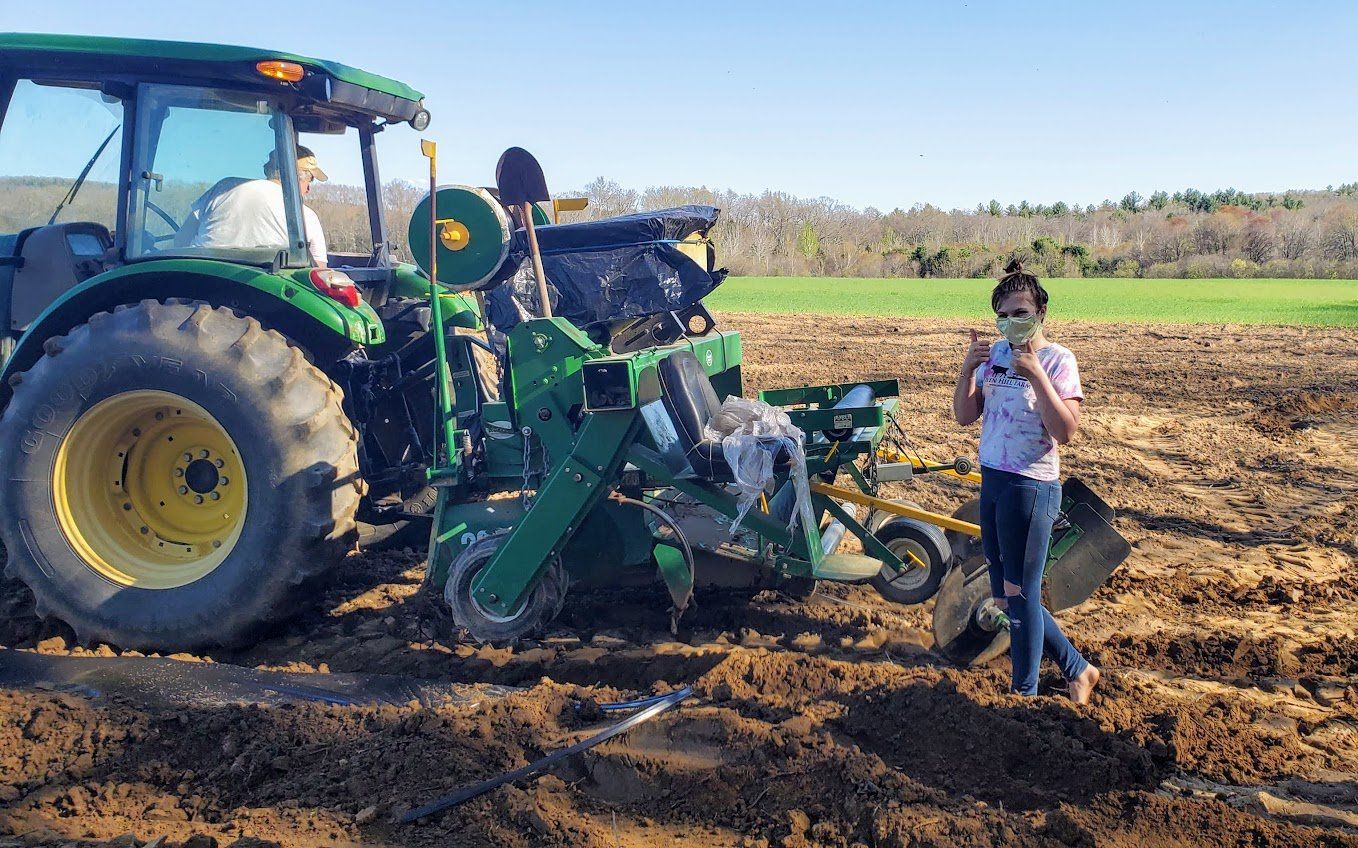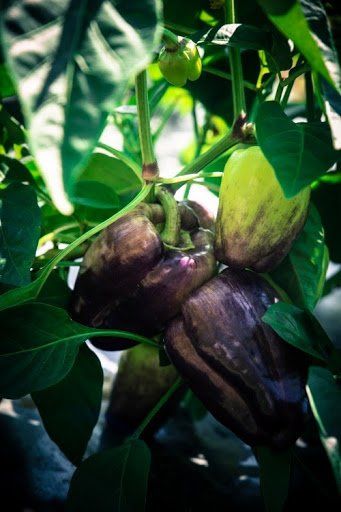What a hot weekend! This season so far has been another crazy one; cold and rain in the spring, snow on Mother's Day weekend, now record heat spells for July....we are grateful for the recent rains, the open field crops sure needed it. Lettuce will soon be done for a little while as it really doesn't like to grow above 90 degrees.
The corn is tasseling out and smells heavenly sweet (and might be ready in another week or so) and the high heat has pushed some of the field-seeded winter squash and successive plantings of beans and cucumbers and zucchini to pop up faster than normal. We farmers work with the swings of weather as best we can, with as many strategies as we can, since ultimately it is not something we can control, but hope to manage.
 One thing over which we have gained better control during the past few seasons is the predation of our greenhouse seeds by rodents. In other words, we have found a few ways to keep those blasted chipmunks and mice from eating our seeds before they sprout. In some years, when we have warm relatively dry soil by June, we can sow the winter squash and successive plantings of cucumbers, melons and summer squash directly into the open fields. This year has been a little trickier as it was cool for a long time and now so very hot and dry. Additionally the pest pressure on young emerging plants has been particularly intense. There has also been an inordinate amount of small rodents, perhaps to the heavy crop of acorns and such from last summer, and you know, #2020.
One thing over which we have gained better control during the past few seasons is the predation of our greenhouse seeds by rodents. In other words, we have found a few ways to keep those blasted chipmunks and mice from eating our seeds before they sprout. In some years, when we have warm relatively dry soil by June, we can sow the winter squash and successive plantings of cucumbers, melons and summer squash directly into the open fields. This year has been a little trickier as it was cool for a long time and now so very hot and dry. Additionally the pest pressure on young emerging plants has been particularly intense. There has also been an inordinate amount of small rodents, perhaps to the heavy crop of acorns and such from last summer, and you know, #2020.

As we use only untreated and organic seeds, they are susceptible to rotting before they germinate if the ground is cool and wet (as well as being vulnerable to the birds, field mice and aforementioned chipmunks) and in past years the results of directly sewn seeds have been rather disappointing. So we hedge our bets and try to get as many of them as we can them started in the greenhouse before transplanting out into the fields.
As soon as we finish planting the seeds into the soil-filled trays in the greenhouse, we cover them with empty inverted trays and weigh them down so that the chipmunks cannot sneak underneath and eat the seeds. The trays have to be uncovered and recovered (taking considerable time and effort) each time they are watered until they begin to germinate, at which point the chipmunks will generally leave them alone. If the plants are covered for too long after they sprout, the light-seeking seedlings can get spindly as they try to grow out to the light, and then will be difficult to transplant.


Recently however, the chipmunks seem to have cross-bred with some super-powered weasel perhaps and have managed to chew through the thick plastic sides of the trays and get to the seeds that way before they emerge. They can't get all of them, but have put a damper on our previously successful strategy.

So we continue to plant, transplant and directly seed, working as hard as we can to ensure we have an abundant crop of melons, cucumbers, summer and winter squash. There is plenty of good news though. The planted watermelons have some tiny fruits, peppers and eggplants have plenty of leafy branches to shield their developing fruits from damaging sunburn, and the sweet potato slips are leafing and vining out across the field in a beautiful way.

Some of the produce you receive today has been rinsed from the field, but like all fresh produce, should be thoroughly washed and often, refrigerated by you at home.
REMINDER: Flower and bouquet shares will start this week for those who have purchased them! Please note if you have an Every Other Week veggie share, that you will need to come each week for your flowers while they are in season, but just grab your veggies on the same biweekly schedule you are already on. Further details about flower and bouquet shares will come to shareholders in a separate email.


We expect to be harvesting some more young onions for this week. If you plan to use them soon, it’s best to keep fresh onions in the refrigerator. They contain more moisture than mature onions, so they bruise easily and keeping them out at room temperature for longer than a couple of days could cause them to mold. Keep them in the crisper drawer, sealed well in a plastic bag, and they’ll stay fresh for about two weeks. If you wish to store them for much later use, you should dry them in a sunny spot. Store away from potatoes because they'll absorb water. Generally, dried onions will keep for 4-6 weeks or longer in a cool dry spot on your countertop or cabinet. Cut onions should be wrapped tightly in plastic wrap and refrigerated and used within a few days.
 Both the bulb and the green stem can be used on a young onion. While the bulb is sweeter than a regular onion, the greens have a more intense flavor than scallions. That means they are wonderful grilled or roasted whole as a seasonal side dish. Get double the use out of them by using bulbs and tops separately. The bulbs don’t have to be peeled and can be used anywhere regular onions are called for. They are particularly nice cooked alongside other spring vegetables in braises, frittatas, and soups. The tops can be chopped and added raw to salads or sautéed and sprinkled over pizza or tossed with pasta.
Both the bulb and the green stem can be used on a young onion. While the bulb is sweeter than a regular onion, the greens have a more intense flavor than scallions. That means they are wonderful grilled or roasted whole as a seasonal side dish. Get double the use out of them by using bulbs and tops separately. The bulbs don’t have to be peeled and can be used anywhere regular onions are called for. They are particularly nice cooked alongside other spring vegetables in braises, frittatas, and soups. The tops can be chopped and added raw to salads or sautéed and sprinkled over pizza or tossed with pasta.




